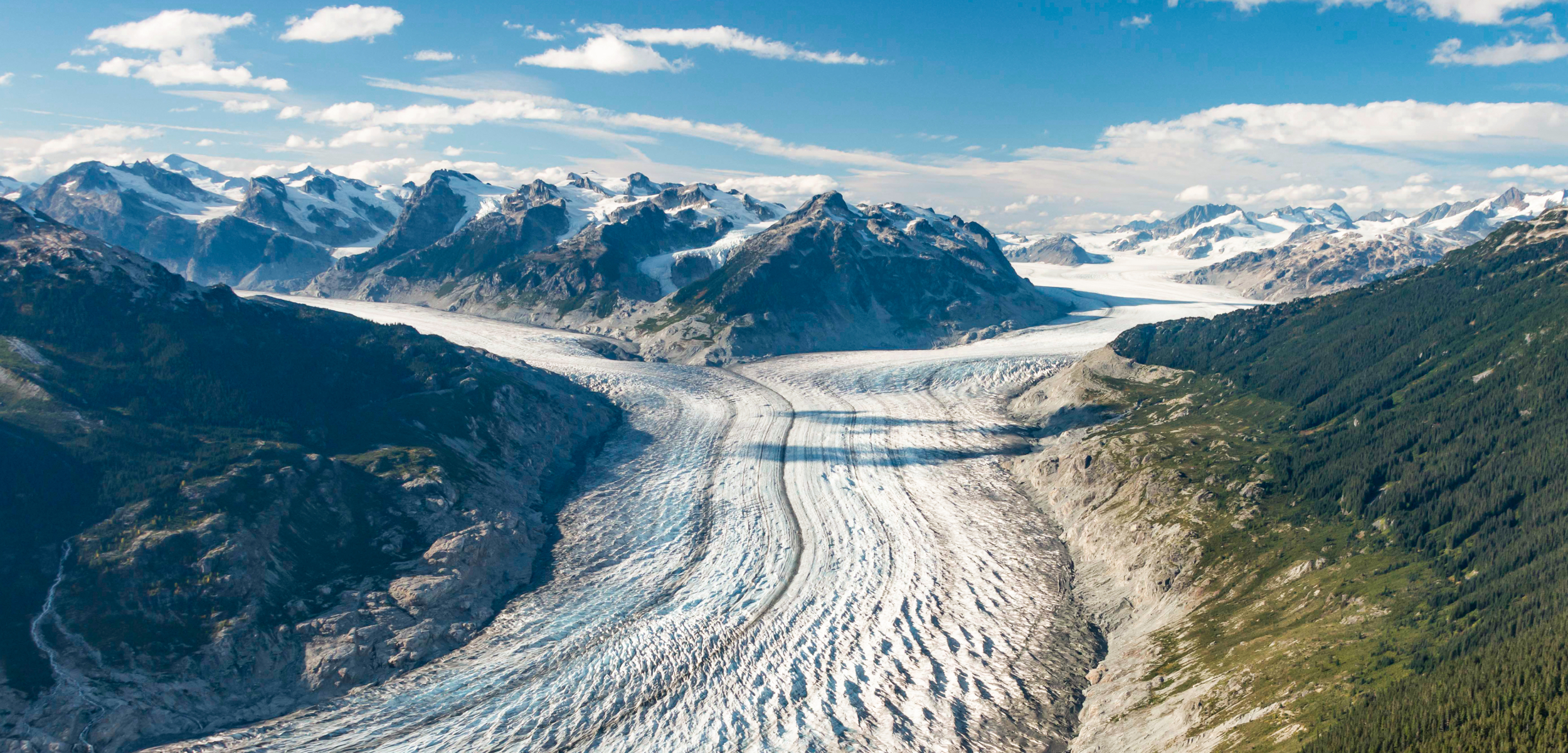A New Northern Node for Ice and Snow Studies
The Hakai Cryosphere Node at the University of Northern British Columbia will be a hub for research into British Columbia’s changing glaciers and snowpack.

The Hakai Institute is headed north. October 12, 2018 marked the opening of a new center focused on ice and snow studies at the University of Northern British Columbia (UNBC) in Prince George. The whole coastal ecosystem is connected. Ice and snow in glaciers and seasonal snowpack comprise what is known as the cryosphere—a frozen reservoir of water that, when it melts, produces massive amounts of fresh water.
“Most of BC’s glaciers melt and eventually make their way down the rivers and into the Pacific Ocean,” says Brian Menounos, the Canada Research Chair in Glacial Change at the University of Northern British Columbia (UNBC), who will lead the node along with Bill Floyd, an adjunct professor at Vancouver Island University (VIU) and research hydrologist with the Province of British Columbia. Fresh water from melting ice and snow transports vital nutrients through coastal watersheds and down to the ocean. These nutrients then fuel the base of ocean food webs.
The Hakai Institute is interested in ecosystems spanning from “ice fields to ocean.” While the existing Hakai Node at UBC’s Institute for the Oceans and Fisheries in Vancouver is anchored on the “ocean” end of that continuum, the new Hakai Cryosphere Node in Prince George is its natural “ice fields” counterpart. The Cryosphere Node is a collaborative effort between the Hakai Institute, UNBC, VIU, and the Province of BC.
Many of the initial flights into the ice fields this year were reconnaissance missions to establish the best place to put in new weather stations and make preliminary maps. But even in its preliminary stages, the scientists are excited about where the research is headed.

“[Vintage Peak near Powell River] is one of the best I’ve seen,” says Menounos, who added that research at this site “should allow us to assess how unusual the ice and snow retreat is in the context of the last 12,000 years.”
In early October, a small team led by Floyd used a good weather window to fly up to the Klinaklini Glacier to put in a weather station and camera above Klinaklini, one of the largest glaciers in western North America, which required a “mountain of preparation” to pull off. They were also able to install a second weather station in the Homathko Watershed, with a plan to install a camera next year.

“It’s very satisfying to have these new stations installed, especially with the challenges associated with working in such a remote location,” says Floyd. “These stations will fill a major gap in our weather observation network and provide data in near real time to scientists and operational users.”
Data from these stations can be used for everything from flood and avalanche forecasting to fire weather hazard mapping. The data will also allow scientists to corroborate the geospatial and modelling data generated by the node.
“Mounting a camera [at Klinaklini] should allow us to create a time lapse movie from daily imagery that shows how ice speeds change through a given year,” added Menounos. “It would also be quite appealing to the public to showcase how the dynamic conditions of mountain glaciers in the coastal mountains are changing, and just how quickly that occurs.”
The Hakai Institute will provide support through our geospatial mapping team, as well as with the large data sets and computer modeling that will result.
“The new node will greatly expand our existing collaboration with researchers from UNBC, VIU, and other institutions,” says Eric Peterson, the executive director of the Hakai Institute. “In addition, we are very interested in fostering career development in this field for UNBC and VIU students. We’ve already seen the quality of UNBC and VIU graduates in our existing operations.”
“We will have an unprecedented look at BC’s ice fields,” says Menounos.

